2020.3.19
UPDATED 2020.4.1
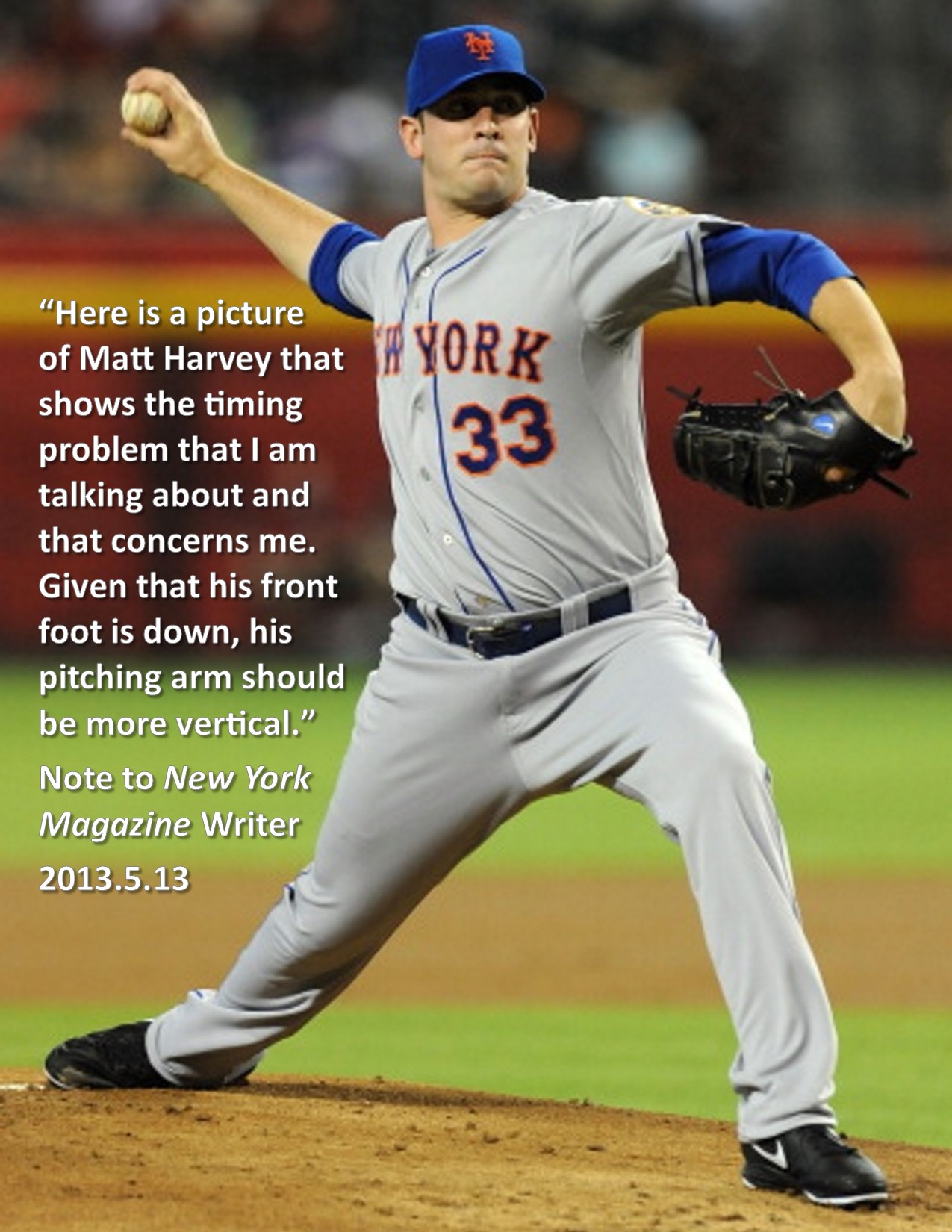 Pitchers are having an increasingly difficult time staying healthy.
Pitchers are having an increasingly difficult time staying healthy.
Why?
The pitching industry -- coaches, instructors, and medical personnel -- says they are interested in that question but, the fact is, they are doing relatively little to study the problem.
In contrast, I have spent the past 15 years studying pitchers and experimenting with various methods of judging Timing in baseball pitchers.
Over the past few years, my ability to accurately predict pitching injuries has increased significantly.
As a result I have decided to release the details of my method to the public so that it can be tested and validated by others.
In sum, my method involves focusing on the position of the pitching arm -- the degree of External, if not Internal, Rotation -- when the shoulders start to turn.
I have found that moment in time -- the moment when the tip of the Olecranon of the pitching arm -- to be the best measure of a baseball pitcher's Timing.
And it's the basis for the predictions of injuries to baseball pitchers that I make via Twitter @thepainguy.
Some related pieces include...
Judging Timing in Baseball Pitchers
The current best practice for judging Timing in baseball pitcher is to measure the position of the pitching arm -- the degree of External Rotation -- at the moment of Stride Foot Contact.
As a result, when I started trying to understand why pitchers were having trouble staying healthy, that's what I did.
And it worked for a while.
However, over the past 10 years or so, I have found that Stride Foot Contact has become an increasingly less reliable milestone, in large part due to the proliferation of ideas like Driveline's Positive Disconnection.
Consequently, five years ago or so I set out to find a more -- universally -- reliable method for judging Timing in baseball pitchers.
Ideally, one that could be used both with in-person video as well as video taken off of MLB.com.
The method I've settled on is to look at the position of the pitching arm when the pitcher's shoulders start to rotate as judged using the Center Field (camera) angle.
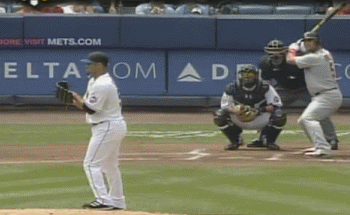
Johan Santana with the Mets
I chose this angle based on its ability to allow me to predict the fates of Johan Santana...
There is no question that Johan Santana has been very successful to date. However, due to his borderline mechanics I question whether Johan Santana will be able to continue that level of success. I think Johan Santana could easily give the Mets the same heartache that Pedro Martinez and El Duque have.
...Jaime Garcia...
The bottom line on Jaime Garcia is that I don't think his elbow problems are a fluke. Like BJ Ryan, I think Jaime Garcia is headed for Tommy John surgery followed a couple of years later by shoulder problems.
Jaime Garcia is not the answer to my Cardinals' prayers.
...and BJ Ryan...
The problem is that, like Chris Carpenter and Kerry Wood, BJ Ryan has a major Inverted L in his arm action. You can see BJ Ryan's Inverted L at Frame 21 of the clip above. This completely destroys his Timing and is the root cause of his elbow problems. It will also set him up for Rotator Cuff and Labrum problems in a year or two.
Those predictions, in particular, were far more accurate than predictions I made using other approaches, including those made by looking at Stride Foot Contact.
The term I use to describe the worst Timing problems -- Flat Arm Syndrome -- is taken from evaluations of pitchers made using this axis.
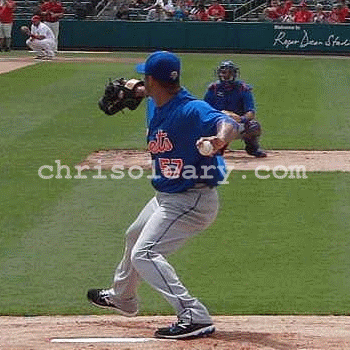
Johan Santana 2013
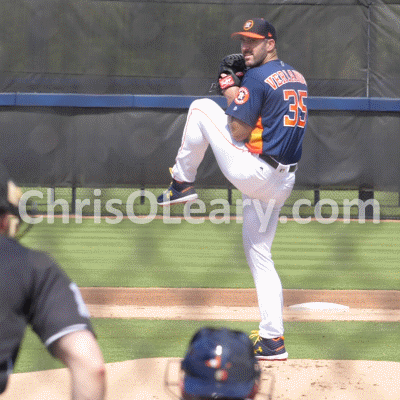
Justin Verlander March 17, 2019
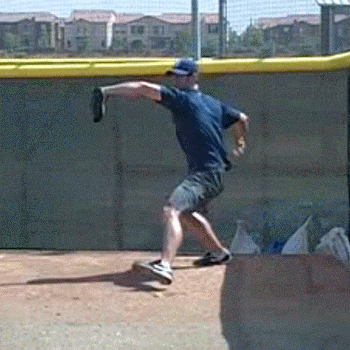
Mark Prior 2010
Technically speaking, what I'm looking at is...
- The degree of External Rotation.
- Of the pitching arm.
- At the moment the tip of the Olecranon -- the point of the elbow -- starts to rotate around as the pitcher begins to deliver the ball to the target.
I couldn't care less what the pitchers' feet are doing.